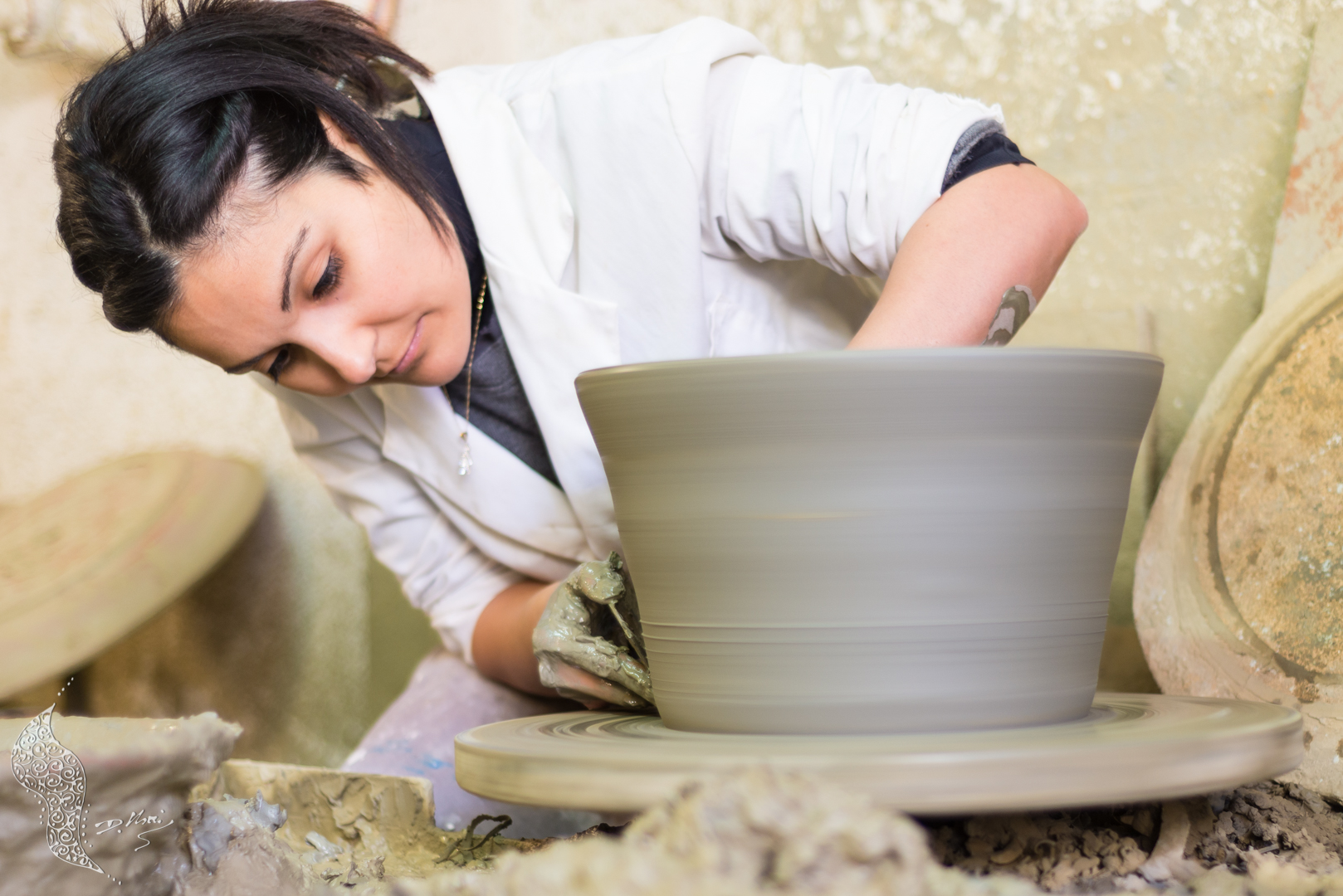
Anita Cerrato and the art of healing wounds
Anita Cerrato is a ceramic restorer with a great passion for the Japanese culture and aesthetics.
She specializes in Kintsugi, a ceramic repair technique that does not hide the fractures of the object, but enhances them by embellishing them: an imperfect beauty capable of restoring life and meaning to any object.
In her atelier in Milan, she creates objects and furnishing accessories of the highest quality, with original raw materials from the Empire of the Rising Sun: clay, precious Urushi lacquer, and Marufun gold.
In 2022 she was awarded the title MAM – Master of Arts and Crafts by the Cologni Foundation.
You are a master of the art of “Kintsugi”. What is it about?
Kintsugi is an ancient form of ceramic restoration.
According to the most accredited legend, it originated in the 15th century AD, when Ashikaga Yoshimasa, the eighth shogun of Ashikaga, after breaking his favorite cup of tea, sent it to China to have it fixed. The repairs unfortunately took place with metal bindings that are not very aesthetic and not functional at all. The object seemed lost, but its owner tried to entrust it to some Japanese artisans who, surprised by the shogun’s tenacity in wanting to get his beloved cup back, decided to try to transform it into a jewel by filling the cracks with lacquered resin and gold powder.
To restore the fragments, the same materials that were originally used are still employed today: urushi lacquer, flour, coal, clay powder (tonoko), gold and silver powders.
In my opinion, Kintsugi can be considered the oldest form of conservative restoration because the damage is not camouflaged: it is even highlighted, revealing the history of the object.
What was your path and how did you approach this highly refined practice?
I know it sounds like a repetition, but thanks to this technique I have made Kintsugi of my life. I had already worked for many years as a restorer, in the field of wood restoration and gilding. I was lucky enough to have great masters and to work in famous Milanese workshops, such as those of Gacarù and Sabatelli.
Unfortunately, already towards the end of the Nineties ancient objects were less interesting for the public. I had already restored the pieces of the first, second and even third houses of my historical clients, but there was no generational change, and the children were no longer interested in filling the homes with antiques. Thus market prices have collapsed, with the aggravating circumstance that modern apartments are cut to the millimeter and often it is necessary to make custom-made furniture.
It was a generalized crisis: the artisans who were close to retirement organized themselves to close, the younger ones, like me, had to reinvent themselves.
I was lucky enough to have a large dowry of gold leaf booklets, which Sabatelli had left me when he closed. So, having a great passion for the East, I had thought of making wooden objects coated with gold. I searched on the internet: orient, gold, bowls … and a photo of a bowl restored with Kintsugi appeared: I immediately fell in love. At the time it was not like now, when you can find the tutorials on Youtube and you can buy the urushi online. Few images were shot and all in sites where psychoanalysis and trauma were mentioned. To understand how to do it, I had no choice but to leave for Japan.
What other techniques do you use besides Kintsugi?
Kintsugi (from “kin”, gold, and “tsugi”, rejoining) is certainly the best known technique because in the West we have attributed a symbolic meaning to it, and the metaphor it carries has become very popular.
There are also other restoration methods, such as “Ginstugi”, where “gin” means silver, “Urushi tsugi”, for which metal powders are not used for the finish, but the lacquer is left exposed. You can also make some inserts when the original fragments of the piece are missing: “Yobitsugi”, when the insert is in ceramic, “Mokuhen”, when the insert is in wood.
Currently I am also learning the technique of “Maki-e”, lacquering, even if it takes a long time because it is very difficult.
Do you also organize courses in your laboratory? Or other initiatives to promote this art?
Kintsugi is nothing more than a ceramic restoration technique, but very few people approach the lessons to learn how to restore.
Almost everyone comes to me to learn how to glue the pieces, of course, but even more so to feel a little less alone and find answers.
The West is the cradle of philosophy and psychoanalysis; so a Kintsugi course becomes a session of self-analysis, and unfortunately I have no answer to give, as Brecht said: “do not expect any answer, other than yours”.
So when people put the pieces together they wonder what the glue of their existence is, when they put the pieces back together they remember an experience so traumatic that, after all, it has become a turning point.
And the more a piece is broken, the richer it will be in the end.
This is what people seek from me: putting the pieces back together, making your life a work of art. For this reason, for years we have been engaged in non-profit activities in cancer wards, family homes, nursing homes, to carry forward the message of Kintsugi: an opportunity can arise from a difficulty.
This year you have obtained the MAM – Master of Arts and Crafts award from the Cologni Foundation. What did this mean for you?
Obviously it was a great honor, which made me think that the twenty-eight years spent in the workshop have not been thrown away. There have been many moments of frustration and the feeling of failure, especially in a country that does not do much to help the artisans.
What is never considered by the institutions is that our activities are slow, indeed very slow, so the taxation on a gain is disproportionate because, if you want to finish an object perfectly, the hours are never paid. A craftsperson cannot optimize production at the expense of quality, as is done in a factory.
To be honest, during the awards-giving ceremony I felt flattered, but also embarrassed, because next to me there were some artisans who have spent up to fifty years in the workshop, so I told myself that there is still a long way to go.
How does tradition and innovation combine in your work?
Tradition is inherent in the manufacturing process and in the materials, innovation is carried forward by ideas and creativity.
A definitely innovative project is to apply the original Kintsugi technique to unusual materials. Three years ago the idea was born, with the photographer Carola Guaineri, to restore torn photos using gold. It took a lot of research because the papers on which you print in the dark room, or baryta and polythene paper, fear humidity, while Urushi needs a warm and very humid environment to dry.
The idea was very successful, especially during the “Homo Faber” event, precisely because we innovated the Kintsugi and declined it in a modern key.
The hope is, always and in any case, to be able to communicate beauty combined with dedication.
What are your plans for the future of your business?
I’m currently working on an ambitious project, focused on the theme of the mask… but I can’t reveal too much!
Kintsu Handmade
Via Vignola, 5 – Milan
www.kintsuhandmade.com
info@kintsuhandmade.com
Ph: +39 333 6540917


25 ottobre 2022





